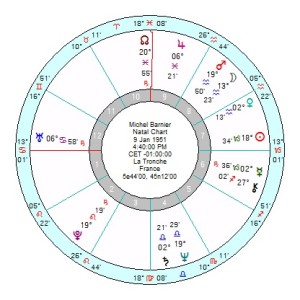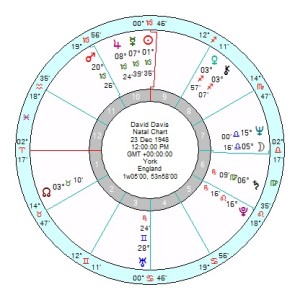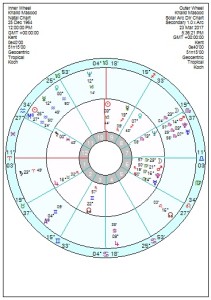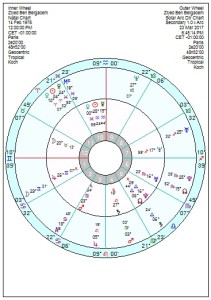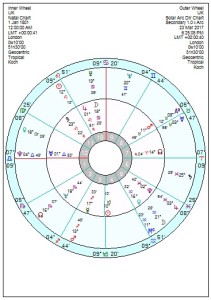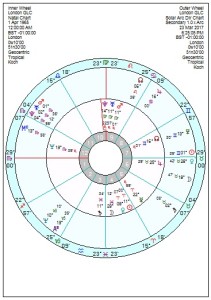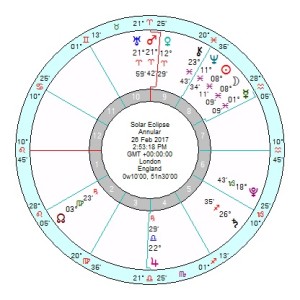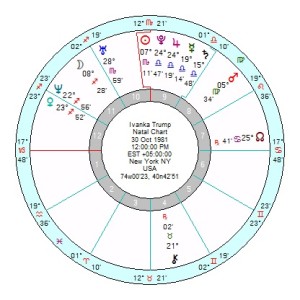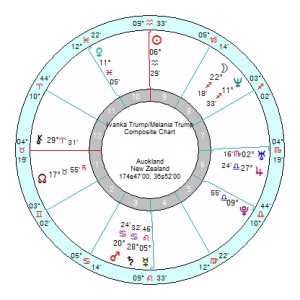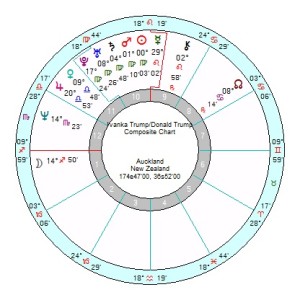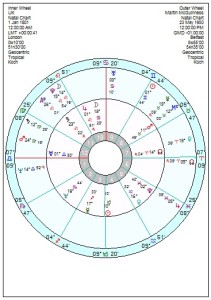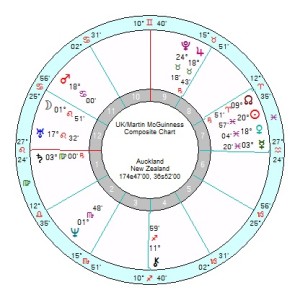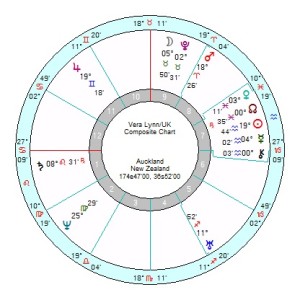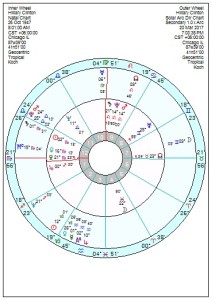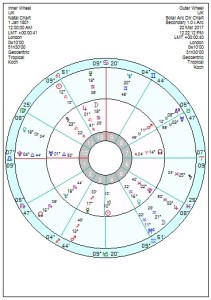From next Wednesday the Brexit process will begin in earnest with the EU initial reply expected two days later. The two key EU players who have both been making ominous noises in advance are EU Commission President Jean-Claude Juncker and EU negotiator Michel Barnier.
Barnier, 9 Jan 1951 4.40pm La Tronche, France, is possibly the better guide since Brexit will be his priority whereas Juncker has several crises looming elsewhere.
Barnier, a Sun Capricorn square Neptune in Libra, inconjunct Pluto is under poleaxing and confusing challenges with tr Pluto conjunct his Sun and square his Neptune till late 2018. With confidence-undermining Neptune transits to his Jupiter/Node from mid next month, on and off till late 2018; with an even more discouraging tr Neptune square his Mars/Saturn this Oct till Jan 2018. If his birth time is accurate then 2019 will be a career-sinker with tr Neptune conjunct his MC.
He’ll be negotiating directly with UK’s David Davis, 23 Dec 1948, a Sun, Mercury Jupiter conjunct in Capricorn trine Saturn in Virgo, with Mars also in Capricorn. He looks jangled this April, but will face his worst fears in 2018/19 with tr Pluto conjunct his Mars, which is trapped and enraging; with a ‘shocking collision’ of Solar Arc Mars square his Sun probably in 2019.
His relationship chart with Barnier, is showing signs of strain, discouragement, devastation and some mighty outbursts in 2017/18; with worse in 2019. Davis’s relationship with Theresa May isn’t easy at best with a composite Mars opposition Pluto square Sun Mercury, and is ploughing through heavy, depressed and disruptive seas in 2017/18.
Although Theresa May will have no direct negotiations with Barnier, she’s clearly setting the agenda, and her relationship with him will be highly-strung, and stressed this year; and in a complete upheaval in 2018/19 with tr Pluto opposition the composite Uranus and tr Uranus opposition the composite Saturn.
Her relationship with Juncker is most at odds in 2018.
Mind you Angela Merkel is none too happy with Juncker this year, and more so next – if both survive that long politically, since she has a challenging election and his health is creaky. He has tr Neptune square his Sagittarius Sun in 2018 so won’t be thriving for one reason or another.
Merkel and May look v edgy come this May, in a complete turnaround in 2018; and aggravated in 2019.
Methinks this may end in tears along the way for one side or the other, or from the look of the above – both.
Add on: Neither Juncker or Barnier are exactly fans of UK Inc. The relationship between Juncker/UK has an impatient, hostile composite Saturn opposition Mars square Venus; with a fight-for-control composite Sun quincunx Pluto; and Pluto being on the focal point of a T square to Uranus opposition Node, which doubles up on the intransigence between the two sides. Late 2017 will be especially frosty as tr Saturn is conjunct the Sun; with irritability and dislike growing in 2018/19 with tr Saturn conjunct Venus, square Saturn and Mars.
Barnier is also instinctively drawn to seeing the UK as a pushy entity that needs put down, with a composite Jupiter Pluto conjunction in a disruptive square to Uranus. There’ll be a good deal of jockeying for position in 2017/18 with tr Pluto trine the composite Jupiter; suspicion and paranoia from tr Neptune opposition Saturn in 2017; bad temper over the New Year as tr Saturn squares the composite Mars; and separated initially in 2018 by tr Uranus conjunct the composite Moon, and more so in 2019 when tr Uranus opposes Neptune.
So it wouldn’t make much odds who the UK negotiator was.

